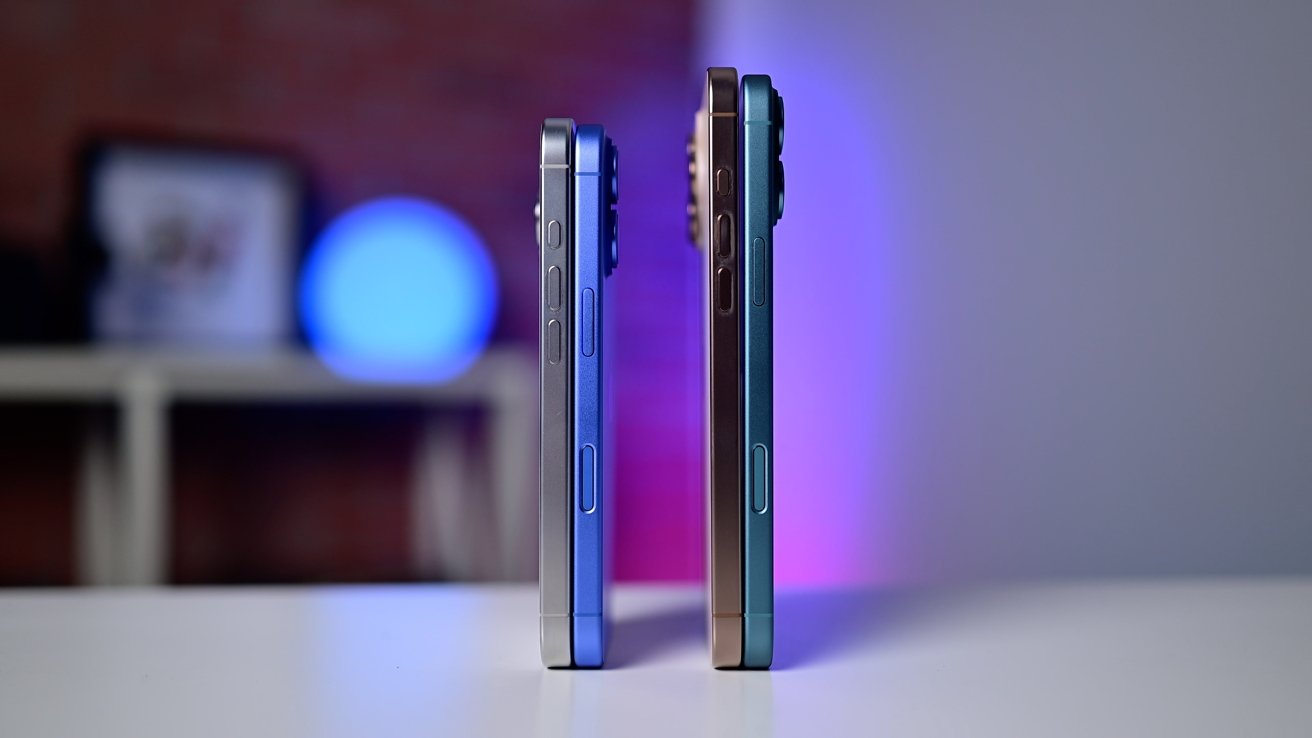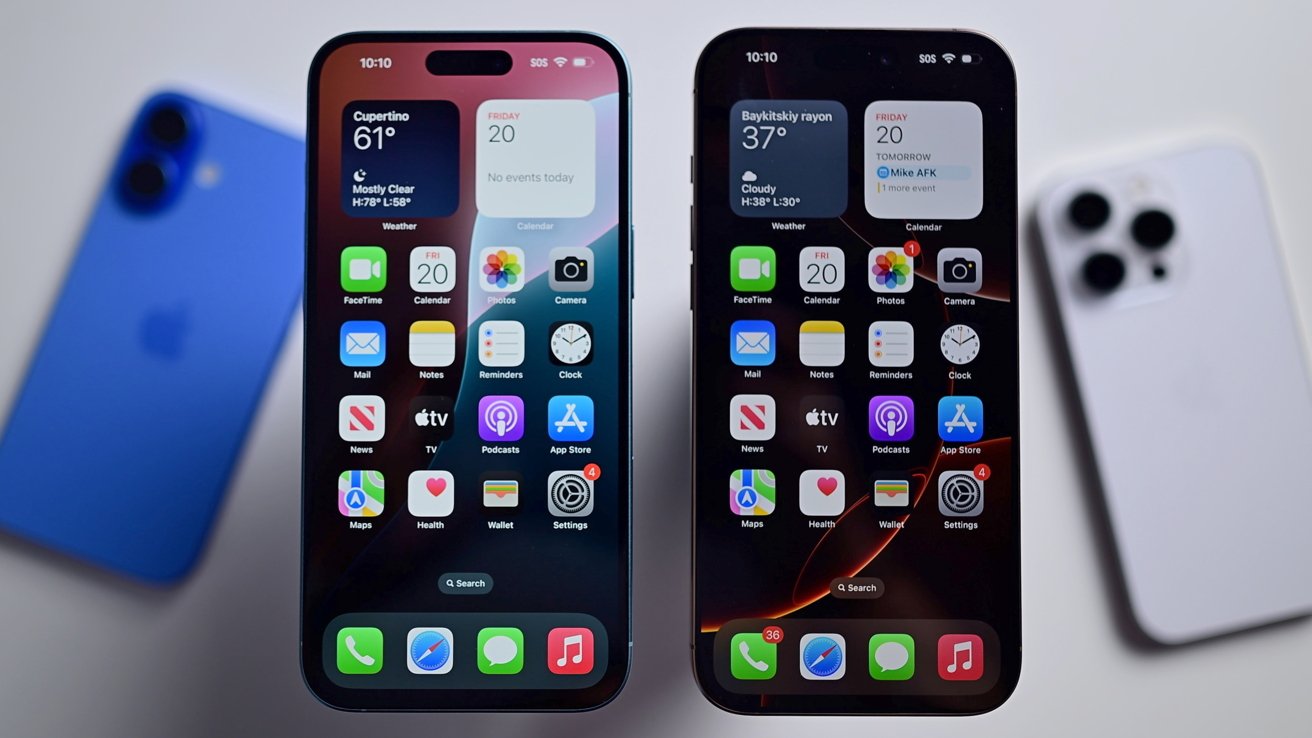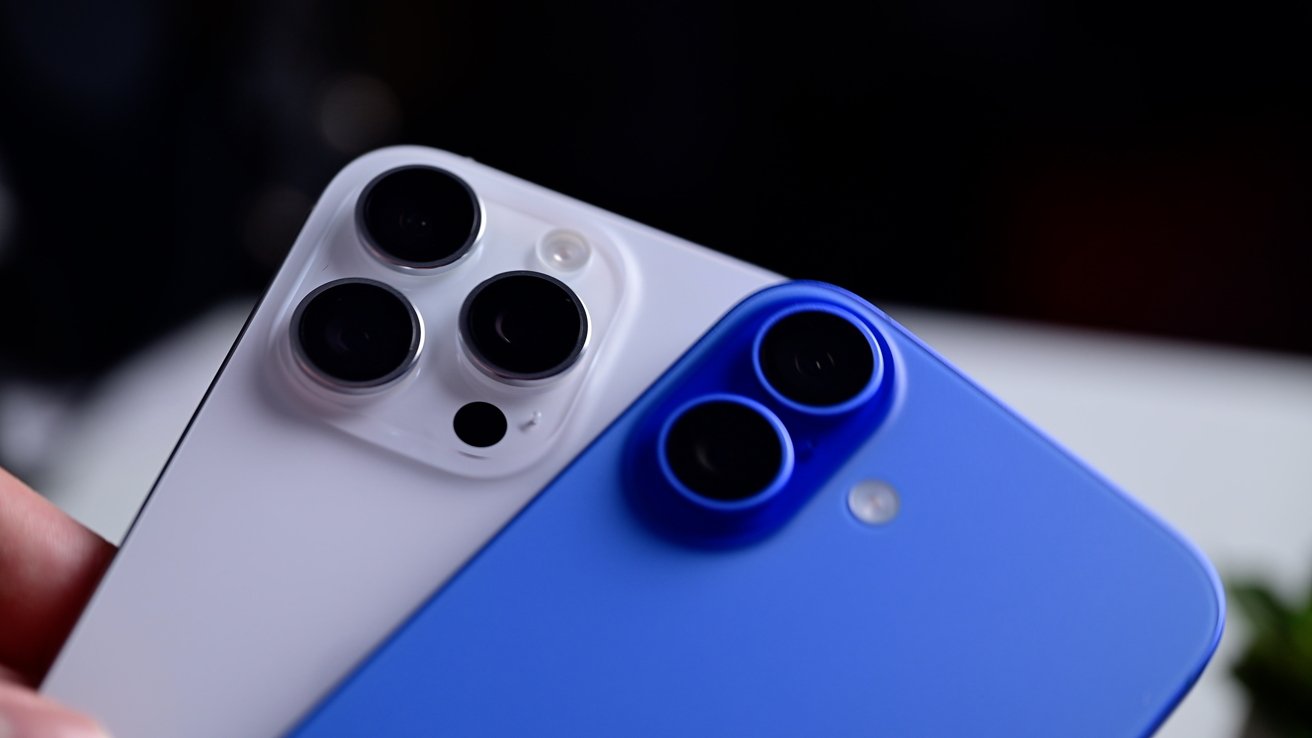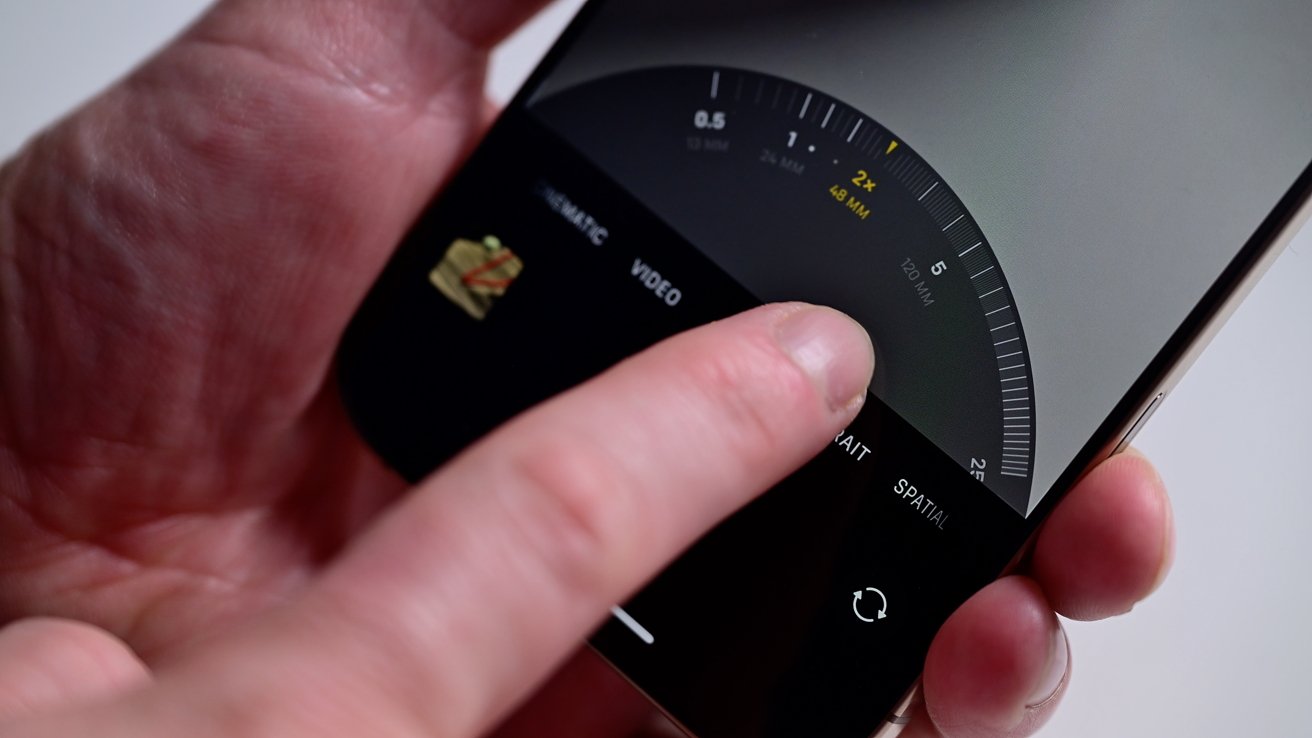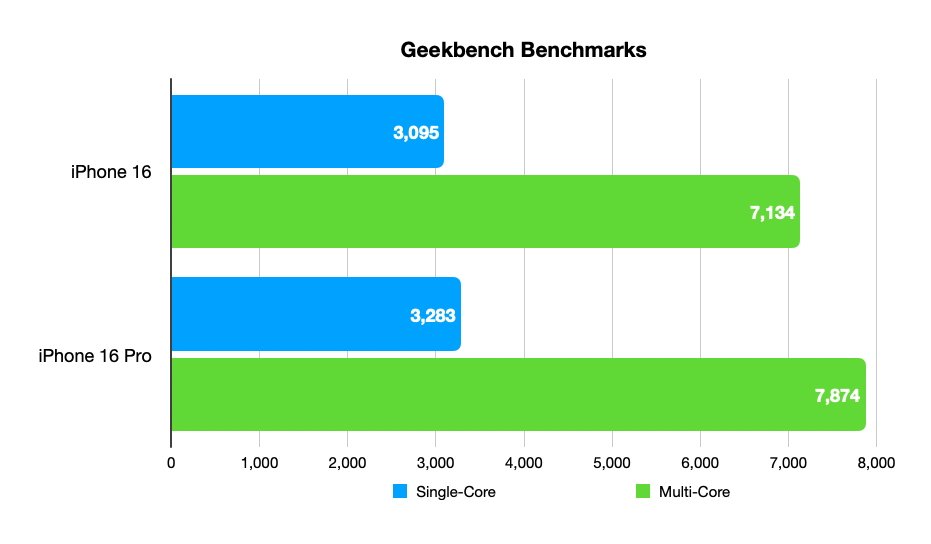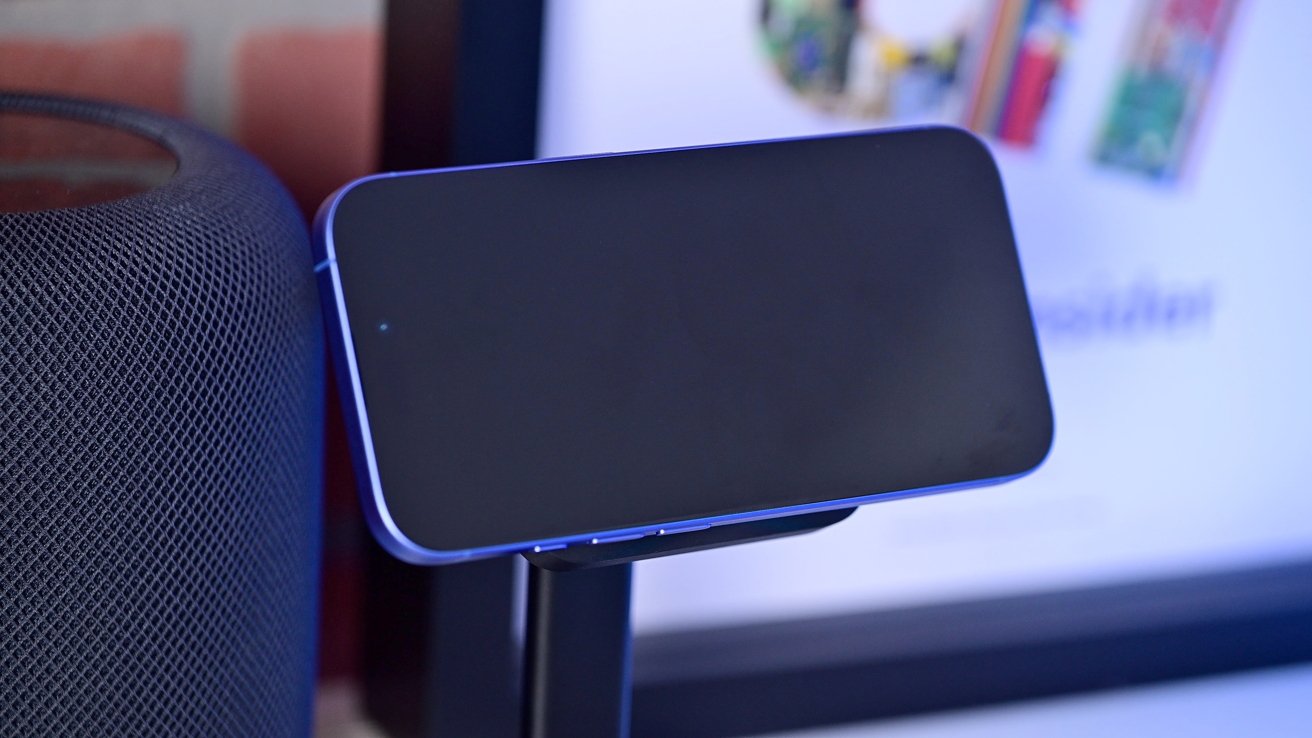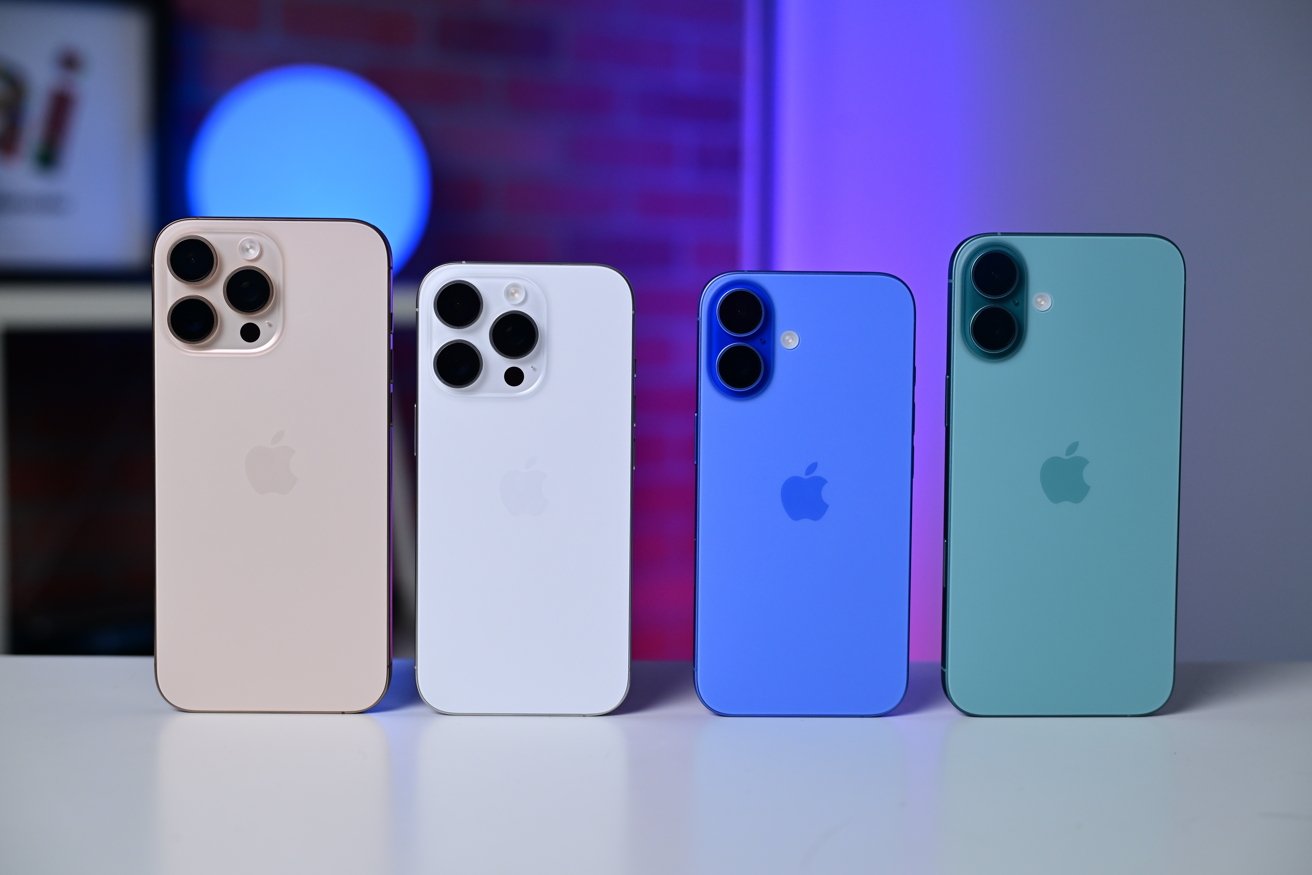
Apple’s standard and Pro tiers of iPhones are more different than they’ve ever been. This is what you should consider when choosing between an iPhone 16 or an iPhone 16 Pro.
The Pro models of iPhone have been around for quite a few years, and it often provides owners a number of advantages over the non-Pro version. For the iPhone 16 generation, going Pro adds a little bit more to the overall package.
But even so, some may not necessarily believe the few-hundred difference in price is actually worth going Pro for.
With both models now available from stores, this is what to look out for when comparing the two models, before you buy.
iPhone 16 vs iPhone 16 Pro – Specifications
| Specifications | iPhone 16 | iPhone 16 Pro |
|---|---|---|
| Price (starting) | $799 Best iPhone 16 prices |
$999 Best iPhone 16 Pro prices |
| Dimensions (inches) | 5.81 x 2.82 x 0.31 | 5.89 x 2.81 x 0.32 |
| Weight (ounces) | 6 | 7.03 |
| Side controls | Action Button, Camera Control |
Action Button, Camera Control |
| Processor | A18 5-core GPU |
A18 Pro 6-core GPU |
| Storage | 128GB, 256GB, 512GB | 128GB, 256GB, 512GB, 1TB |
| Display type | 6.1-inch Super Retina XDR | 6.3-inch Super Retina XDR, ProMotion, always-on display |
| Resolution | 2,556 x 1,179 at 460ppi | 2,622 x 1,206 at 460 ppi |
| True Tone | Yes | Yes |
| Biometrics | Face ID | Face ID |
| Connectivity | 5G (Sub-6GHz and mmWave), Gigabit-class LTE, Wi-Fi 7, Bluetooth 5.3, Second-gen Ultra Wideband NFC Emergency SOS via Satellite, Roadside Assistance via Satellite, USB-C (USB 2), Thread support |
5G (Sub-6GHz and mmWave) Gigabit-class LTE Wi-Fi 7 Bluetooth 5.3 Second-gen Ultra Wideband NFC Emergency SOS via Satellite Roadside Assistance via Satellite USB-C (USB 3) Thread support |
| Rear Cameras | 48MP Fusion, 12MP Ultra Wide with Macro |
48MP Fusion, 48MP Ultra Wide, 12MP Telephoto with 5x optical zoom |
| Video | 4K 60fps, 4K 60fps HDR with Dolby Vision, 1080p 240fps Slo-Mo, Cinematic Mode, Spatial Video, Macro Video, Sensor-shift optical image stabilization, Action Mode |
4K 120fps,, 4K 120fps HDR with Dolby Vision, 1080p 240fps or 4K 120fps Slo-Mo ProRes 4K 120fps with external recording, Cinematic Mode, Spatial Video, Macro Video, Sensor-shift optical image stabilization, Action Mode |
| Front Camera | 12MP TrueDepth, Autofocus |
12MP TrueDepth, Autofocus |
| Battery Size (Video playback time) | Up to 22 hours | Up to 27 hours. |
| Colors | Black, White, Teal, Pink, Ultramarine |
Black Titanium, White Titanium, Desert Titanium, Natural Titanium |
iPhone 16 vs iPhone 16 Pro – Physical dimensions
In previous years, the standard iPhone and the Pro equivalent were almost identical in size. That’s not the case in 2024.
The iPhone 16 measures 5.81 inches long and 2.82 inches wide. By comparison, the iPhone 16 Pro is longer at 5.89 inches, but a bit thinner at 2.81 inches. The standard model continues to be thinner, at 0.31 inches to 0.32 inches.
The physical size difference, as well as the inclusion of other elements on the Pro model, means that the iPhone 16 Pro is also heavier. At 7.03 ounces, the iPhone 16 Pro is just over an ounce heavier than the six-ounce iPhone 16.
The design of the two models is ultimately very similar, with a glass panel sandwich of a metal frame. While the iPhone 16 opts for aluminum, the iPhone 16 Pro instead uses titanium, which should end up being a more hard-wearing chassis over its standard counterpart.
While the Pro models had the Action Button in 2023 while the non-Pro used the mute toggle on the side, they’re all now using the button. The parity also includes the Camera Control button, a new addition to all models, that lets users take photographs quickly and change the settings too.
iPhone 16 vs iPhone 16 Pro – Display
While earlier models offered the same physical size of display, the iPhone 16 and iPhone 16 Pro have different screens. The iPhone 16 has a 6.1-inch Super Retina XDR display, while the iPhone 16 Pro has a 6.3-inch version.
The size difference also means there’s a variation in resolution, but not by much. The iPhone 16 has a 2,556 by 1,179 resolution and the Pro has a 2,622 by 1,206 resolution.
There are marginally more pixels on the Pro, but it’s an identical pixel density at 460 pixels per inch.
Both displays are largely functionally similar, as they both support Wide color (P3), True Tone, and can go up to 2,000 nits of brightness when used outdoors. The contrast ratio of 2,000,000:1 is also identical.
The Pro model’s screen does come ahead again because of some Pro-specific features. There’s ProMotion, a technology that enables an adaptive refresh rate of up to 120Hz.
The non-Pro doesn’t have ProMotion, so is stuck with a maximum refresh rate of 60Hz. There’s also no always-on element either, as that’s a Pro-only feature too.
iPhone 16 vs iPhone 16 Pro – Cameras
There’s an obvious disparity between the two tiers. The Pro models have three cameras on the back, while the non-Pro have two.
Beyond that, the Pro iPhones continue to offer a lot more benefits to avid photographers and videographers than the non-Pro line.
The two tiers both start with the same Fusion camera, the new name for the Main camera of yesteryear. It’s still a 48MP sensor, though the iPhone 16 has a wider aperture at f/1.6 over the iPhone 16 Pro’s 1.78.
Sensor-shift optical image stabilization is also here, as is the virtual camera. Cropping into the middle 12MP of the sensor creates a fake 2x optical zoom for both versions.
The second camera is the Ultra Wide, but the Pro uses a 48MP upgraded sensor while the 16 uses its 12MP version again. This does mean you can get more detail in wide shots taken on the Pro range.
The Pro also has the Telephoto, this time equipped with the Tetraprism lens across both sizes, so it has an optical 5x zoom.
Across both tiers, you get the TrueTone flash, the Photonic Engine and Deep Fusion computational photography, Portrait mode, Photographic Styles, Macro, Spatial Photos, and Night Mode. The Pro also gets Night Mode Portraits, as well as Apple ProRAW imaging support.
When it comes to video, the Pro again gets some considerable advantages.
You can record 4K Dolby Vision video at 60fps on the standard iPhone 16, but you can go to 120fps on the Pro. Both still benefit from 1080p Slo-Mo hitting 240fps.
Cinematic Mode is available across the pair, as well as an Action Mode, and 1080p Spatial Video recording, Macro, and Time Lapse modes.
The Pro extends its functionality lead thanks to some things that arrived with the iPhone 15 Pro generation. That 4K Dolby Vision recording at 120fps can even be the ProRes version if you take advantage of the Pro’s external recording capability.
Log video recording also only appears on the Pro model. As does support for the Academy Color Encoding System.
Both models also gain wind noise reduction and Audio Mix features, but the Pro has a “studio-quality four-mic array,” which helps these features more.
The front camera is identical between the pair of models. That’s a 12MP TrueDepth front camera with 4K Dolby Vision recording up to 60fps, Slo-mo at 1080p 120fps, and with Cinematic mode at 30fps. The Pro has the advantage of ProRes video support at up to 4K 60fps.
iPhone 16 vs iPhone 16 Pro – Processing and performance
In a change to the last few generations, Apple has decided to bring the new iPhones to the same generation of A-series chip. Albeit not with the same specification.
The iPhone 16 has the A18 chip, which consists of a six-core CPU with two performance cores and four efficiency cores. This was said by Apple to be 30% faster than the previous A16 Bionic, and it could also use 30% less power under a similar load.
For the iPhone 16 Pro, it uses the A18 Pro, which has a similar six-core CPU setup. However this time Apple says the CPU is 15% faster than the A17 Pro, while using 20% less power.
For GPUs, the A18 has a five-core version while the Pro has a 6-core edition. Each offers hardware-accelerated ray tracing for gaming, and speed improvements over their previous generations.
Then there’s the 16-core Neural Engine, the important part that will power the Apple Intelligence functionality. For the A18, it’s twice as fast as the version in the A16 Bionic chip.
The A18 Pro’s Neural Engine is also better than the A17 Pro, but its benefit is more from a 17-percent increase in total system memory bandwidth. It’s not the doubling of transistors as the non-Pro benefits from, but rather a more efficient usage.
So, it seems like there’s a little bit of a difference in performance on the cards, at least compared to previous generations. When it comes to Geekbench benchmarks, it shows a relatively small difference between the models.
The Geekbench single-core scores are about 3,095 for the A18, and about 3,283 for the Pro. Likewise, the multi-core score sees a 7,134 vs 7,874 pairing of the devices.
This works out to be a single-core upgrade of about 6% for single-core tasks, 10% for multi-core.
It’s fair to say that you’re going to see improvements in terms of graphics, for the simple reason that Apple’s including an extra core in the Pro model.
For end users, there’s certainly more performance offered by the Pro model, but it’s not that much. It’s certainly not enough to move the needle on Apple Intelligence either.
iPhone 16 vs iPhone 16 Pro – Connectivity
You don’t expect much in the way of differences when it comes to connectivity. To a point, there’s little to actually spot here.
Both the standard and Pro models work on 5G networks with sub-6Ghz and Mmwave supported, along with Gigabit LTE with 4×4 MIMO and LAA.
Local wireless connectivity is pretty much the same, with Wi-Fi 7, Bluetooth 3, NFC, and a second-gen Ultra Wideband chip in each. There’s even Thread networking support for use with some smart home devices on HomeKit.
The only real point of difference comes from the USB-C port in the base.
The iPhone 16 Pro relies on USB 3 speeds of up to 10Gbps to externally record video fast. This simply isn’t offered in the iPhone 16, which sticks to USB 2 speeds of 480MB/s.
When it comes to satellite-based connectivity, both tiers of iPhone offer the same features. Emergency SOS via Satellite, Roadside Assistance via Satellite, and Messages via Satellite are all available to use.
iPhone 16 vs iPhone 16 Pro – Power and battery
The iPhone 16 is claimed by Apple to have up to 22 hours of battery life when used to watch locally stored video. This shrinks to 28 hours for streamed video but extends to 80 hours for audio playback.
The Pro certainly wins here, with up to 27 hours of usage time for local video and 22 hours streamed. Audio playback grows a tiny bit to 85 hours.
As for recharging, both standard and Pro models can use MagSafe to recharge wirelessly at up to 25W, or 15W with Qi2 or 7.5W with Qi.
Fast charging is also possible on both over USB-C, with each able to reach a 50% charge in about half an hour when used with a 20W adapter or at the higher MagSafe rate.
iPhone 16 vs iPhone 16 Pro – Other features
Biometrics continue to be offered via Face ID, handled by the TrueDepth camera hidden in the Dynamic Island UI element.
Both are rated to IP68 water and dust resistance, so they could survive being at a depth of up to 6 meters (19.7 feet) for up to 30 minutes.
Crash Detection is available as standard on both models, using a collection of sensors to detect if there has been an impact.
iPhone 16 vs iPhone 16 Pro – Capacity, color, and pricing
The color selection for the Pro models includes Natural Titanium, Black Titanium, White Titanium, and a new Desert Titanium.
You get a little bit more choice and variety with the iPhone 16, with options consisting of Black, White, Pink, Teal, and Ultramarine.
iPhone 16 vs iPhone 16 Pro – Worth the upgrade?
It’s obvious that the iPhone 16 Pro is the better device overall when put against the iPhone 16. But that’s not really the question being asked here.
Instead, you should consider whether paying an extra $200 is worth it, given what the Pro provides in exchange.
As it stands, you get a barely bigger smartphone and display, a bit of a speed bump when it comes to performance, and an extra camera. That, and the knowledge you’re rocking the premium model in your everyday life.
To typical users, that may not seem like enough in most cases. However, if you’re a creative professional, there are still a lot of features that will pull you to the Pro model.
The Telephoto camera with Tetraprism is one such feature since you simply can’t zoom on the standard iPhone 16. Excluding the virtual crop-based camera, of course.
But it’s features like Log and ACES support, as well as external recording, which should make creatives excited with the prospect of going for the upper-tier model.
Getting an iPhone 16 and saving about $200 is a pretty good deal considering the Apple Intelligence-based improvements on display. That, and you can splash some of your savings on a decent case for it.
But if you need to stretch your videography or photography muscles, you really should be going Pro.
Where to buy Apple’s iPhone 16 vs iPhone 16 Pro
Wireless carriers are offering incentives through trade-in deals and bill credits on both the iPhone 16 and iPhone 16 Pro. At press time, the offers deliver up to $1,000 off. You can jump straight to the promotions below or head over to our iPhone Price Guide for easy side-by-side comparison.
- Boost Mobile via Amazon: Save up to $1,000 (no trade-in required)
- AT&T Wireless: Get an iPhone 16 Pro on AT&T with qualifying trade
- Verizon Wireless: Get an iPhone 16 Pro on Verizon with eligible trade
*Terms and conditions apply. Please see site for details. And check out our iPhone deals roundup for even more offers.
